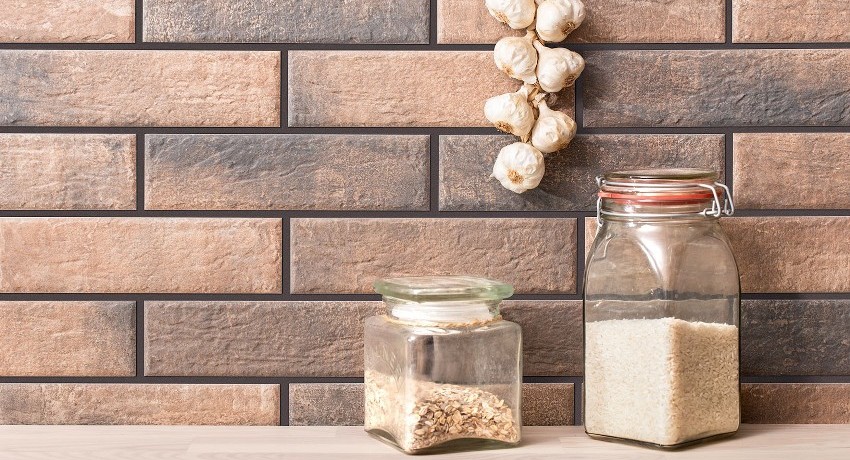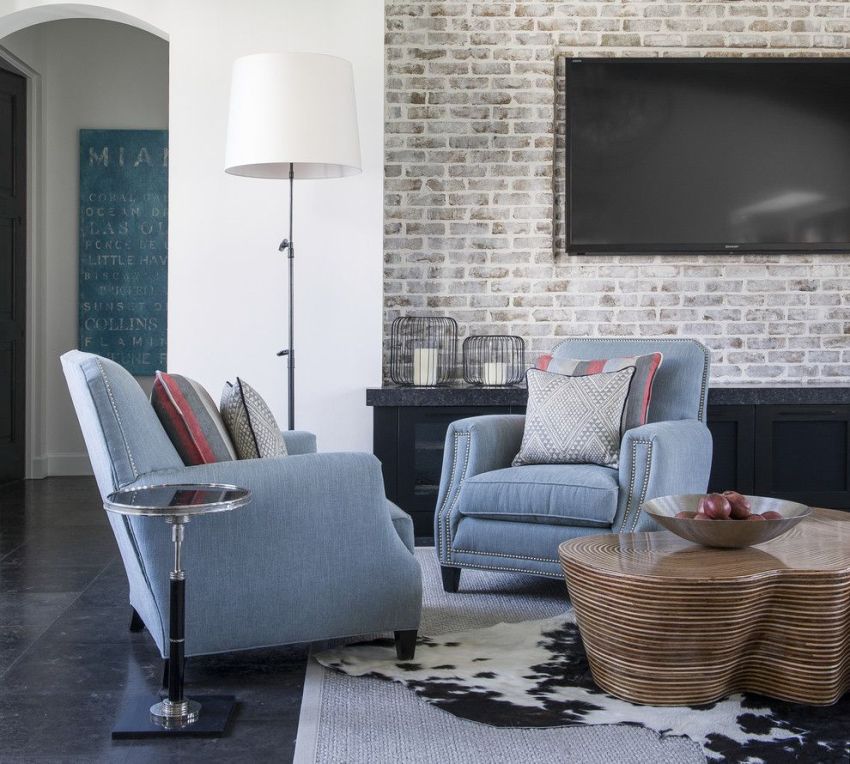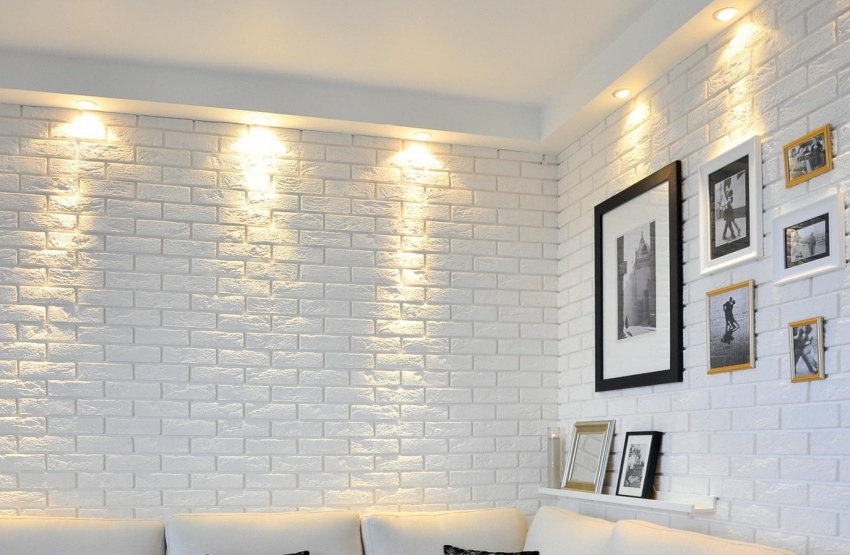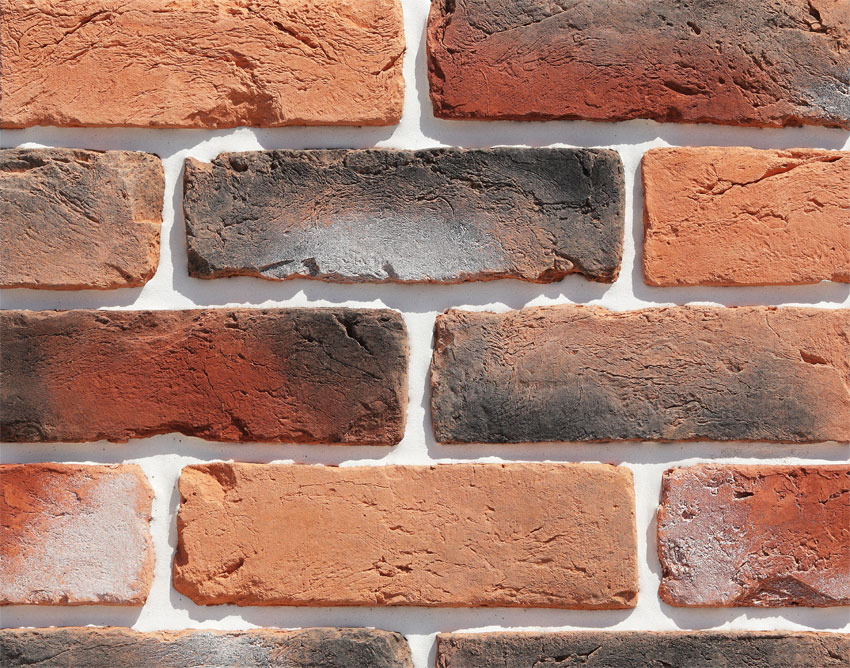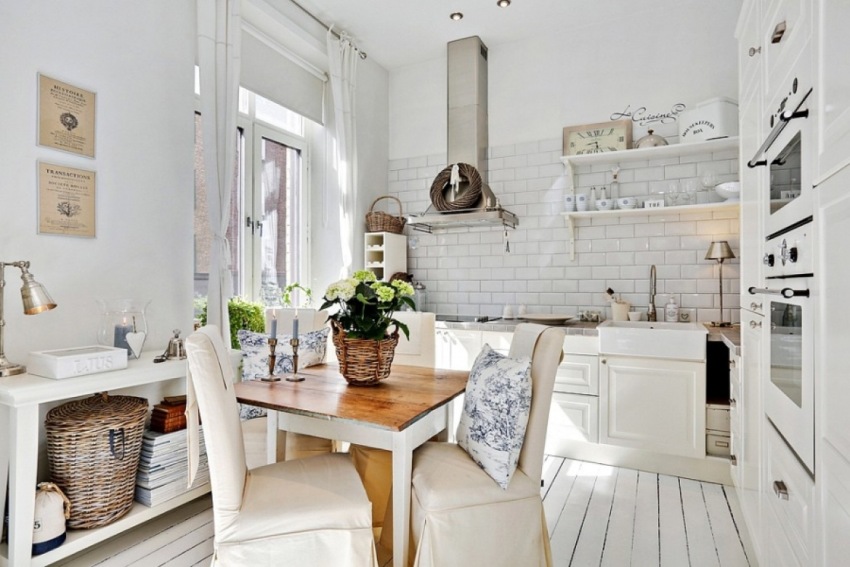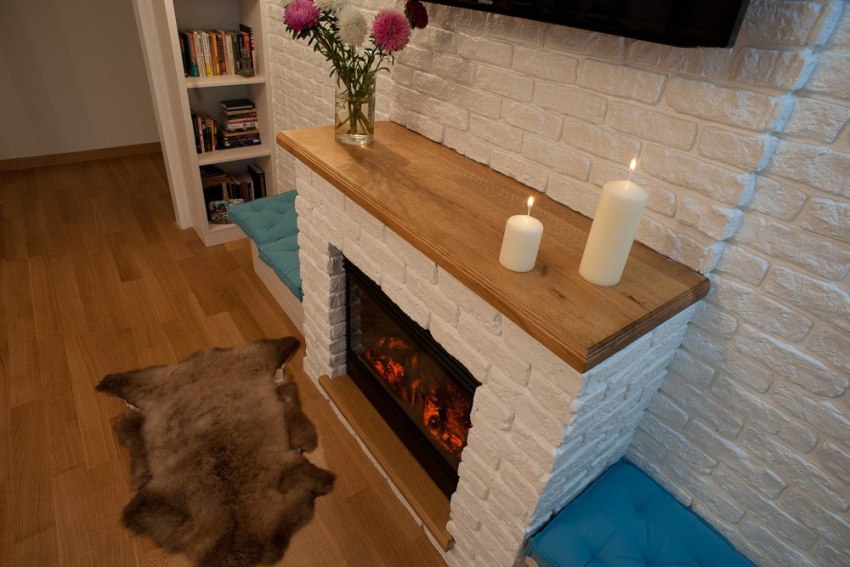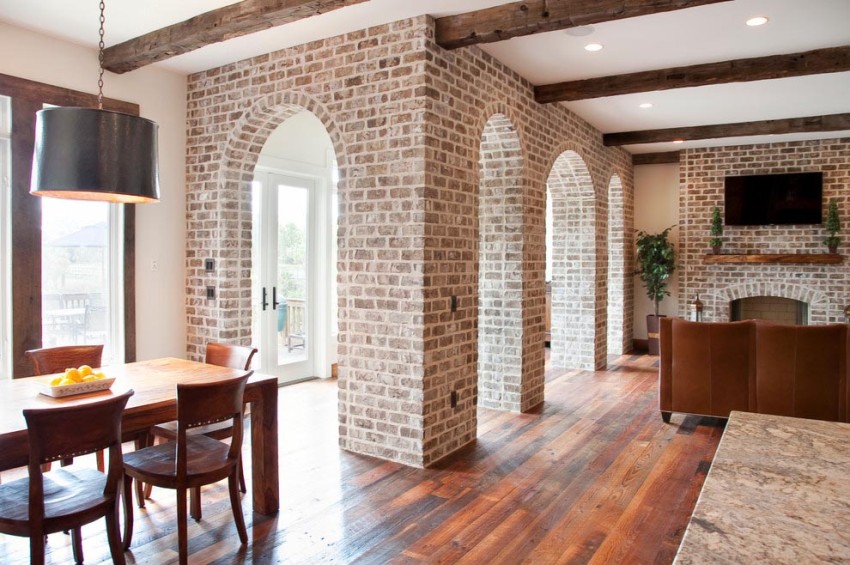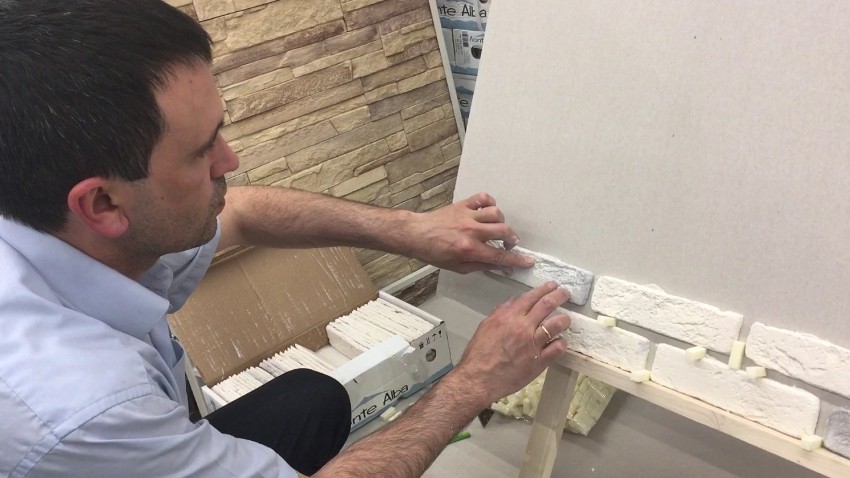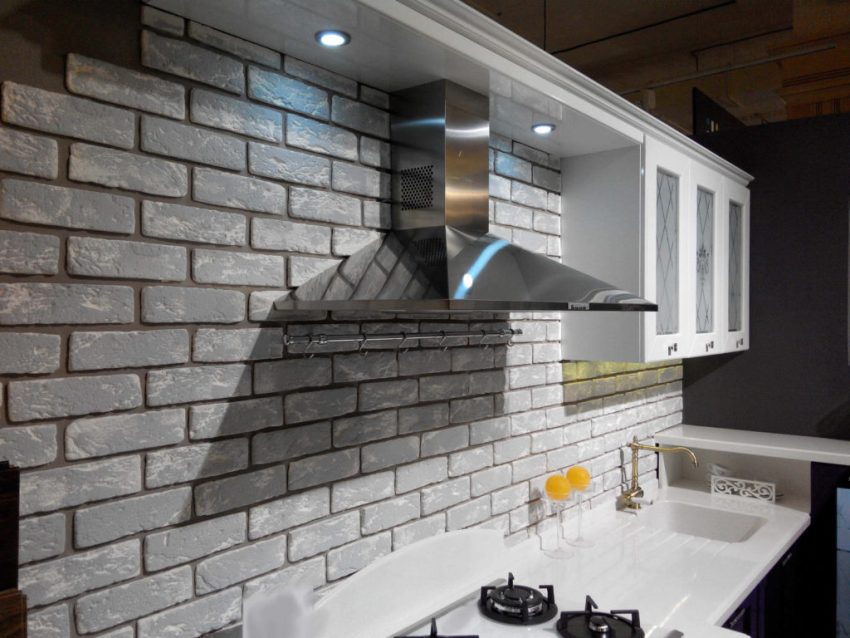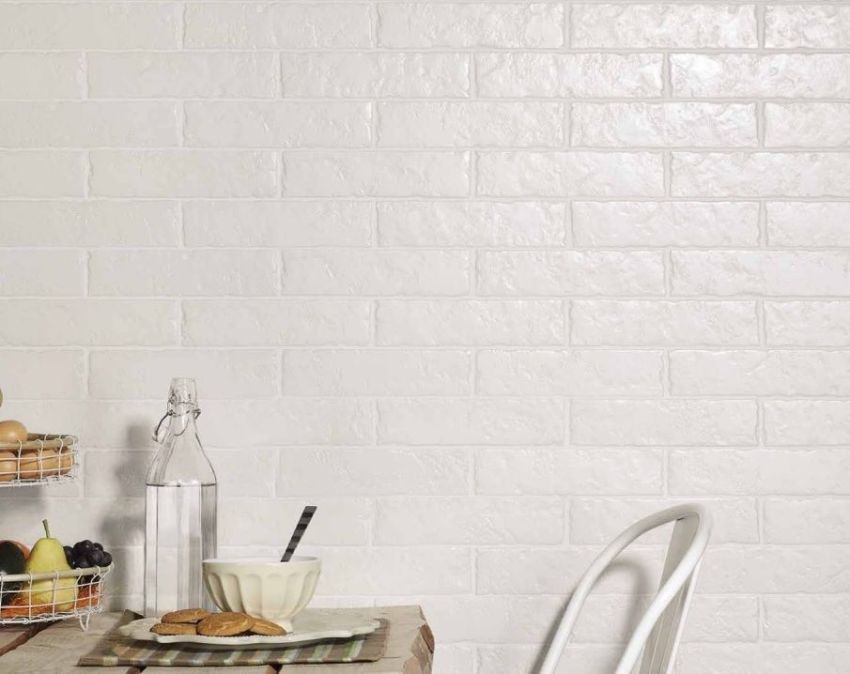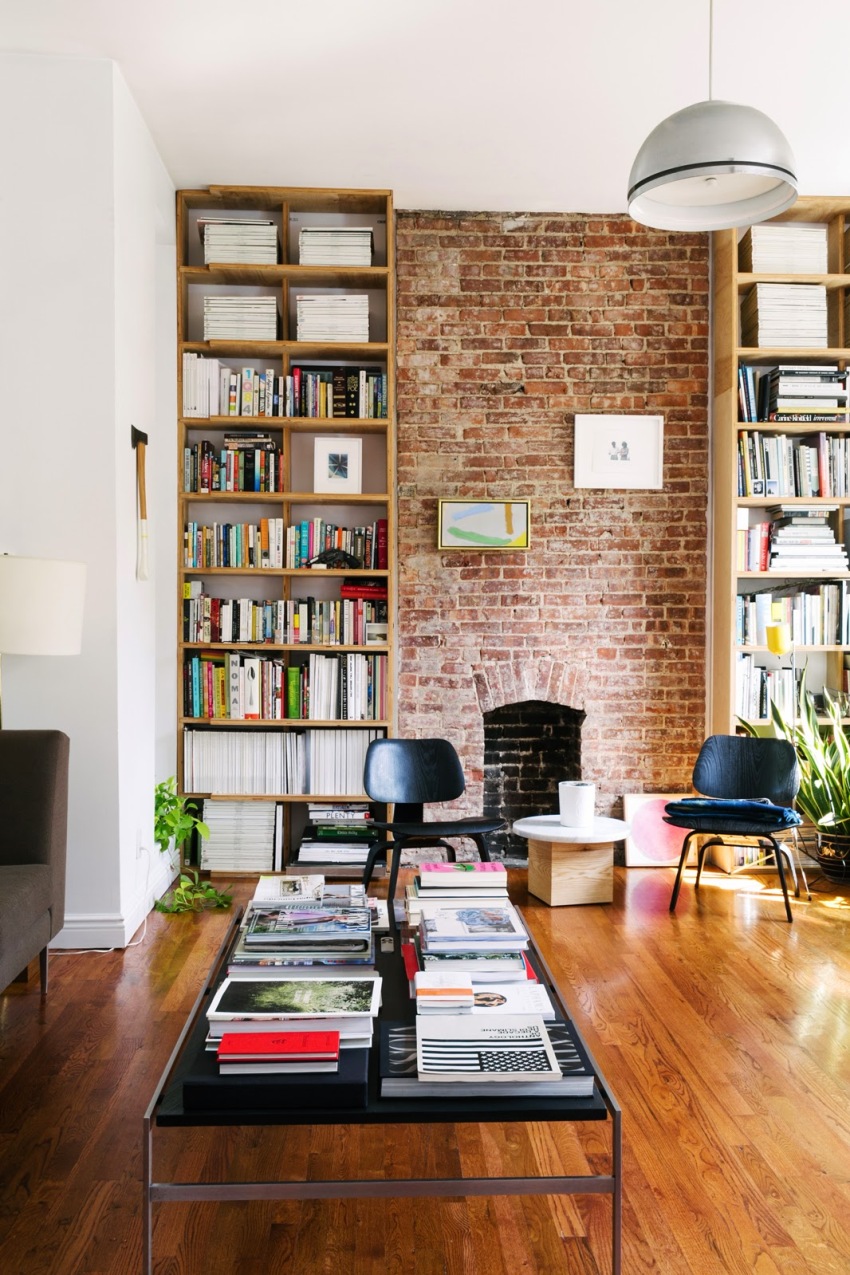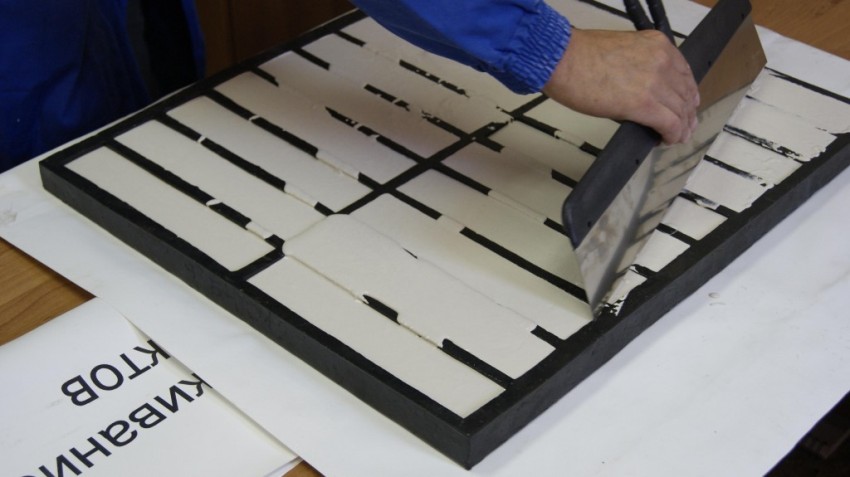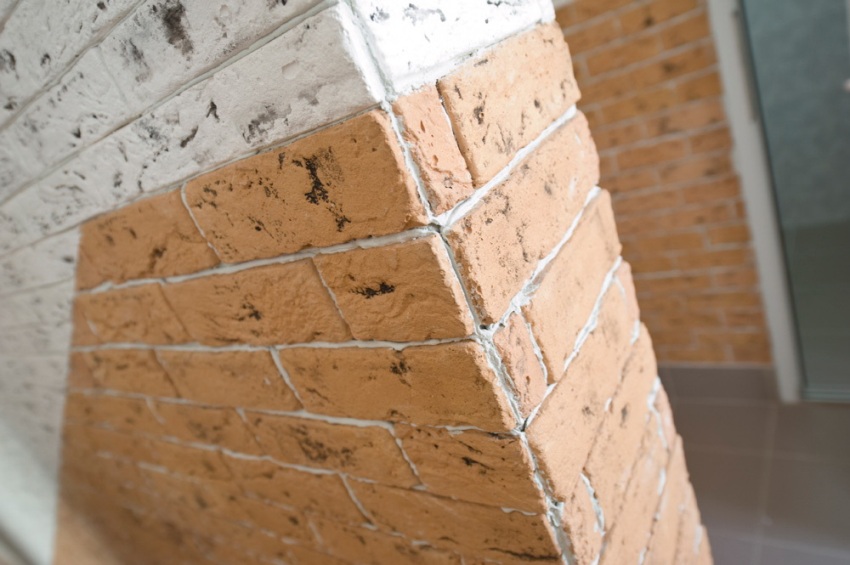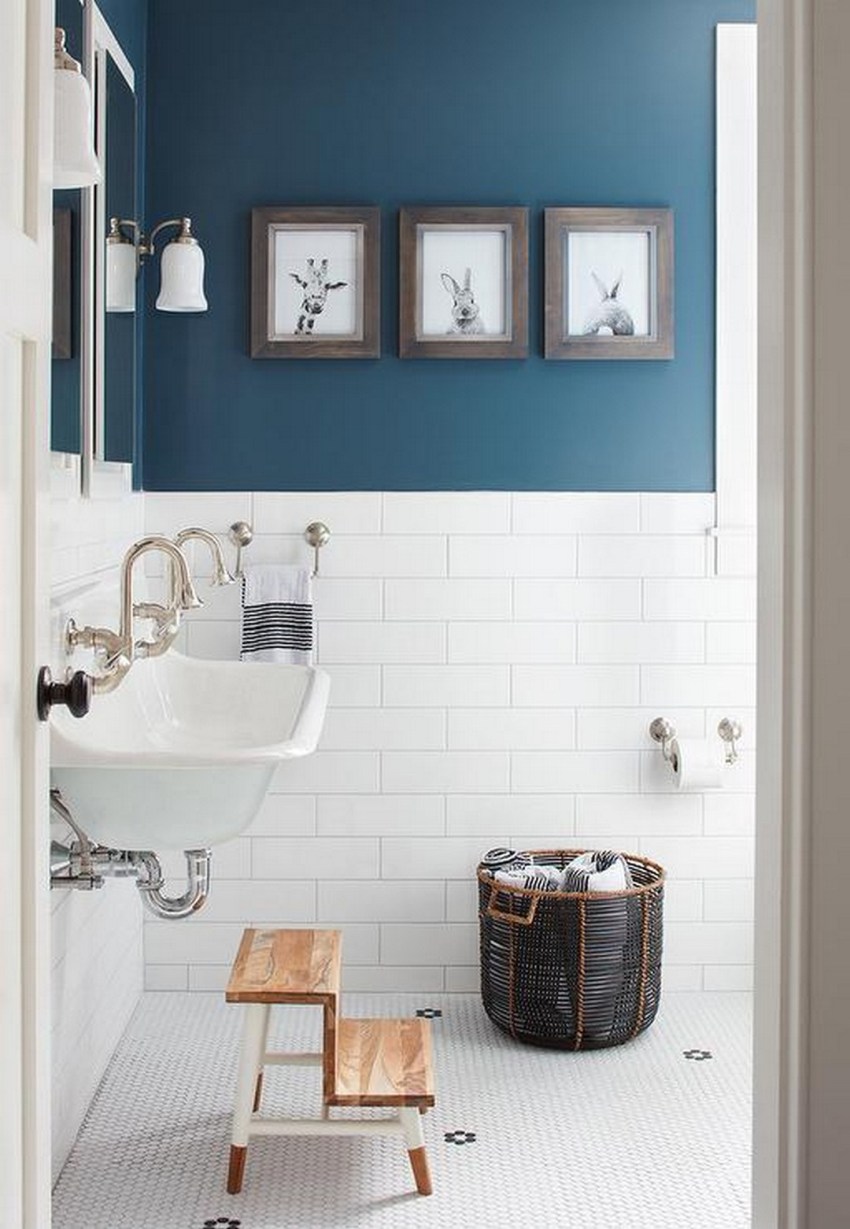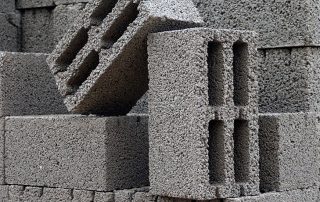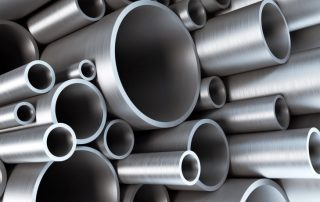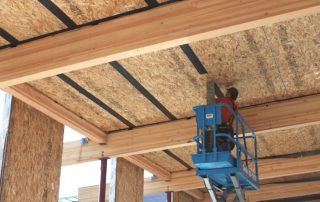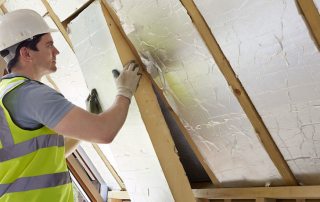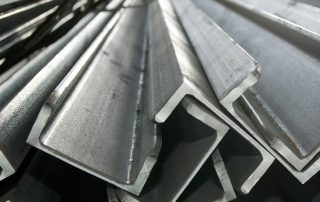There are many materials that can be used to decorate and update an interior. Brick-like gypsum tiles are one of the best options, since they have excellent thermal insulation properties, resistance to temperature and humidity changes, and most importantly, they are completely environmentally friendly. The article will discuss how best to lay this material and what you should pay special attention to during installation.
Content
- 1 Advantages and disadvantages of gypsum brick tiles for interior decoration
- 2 Brick-like gypsum tiles: various ways of laying the material
- 3 How to prepare the surface for laying gypsum tiles
- 4 Secrets of laying brick-like tiles on various substrates
- 5 Is it worth buying gypsum brick tiles: material cost
- 6 How to make gypsum tiles with your own hands: manufacturing technology
Advantages and disadvantages gypsum brick tiles for interior decoration
The use of gypsum tiles for brick as a finishing material has a lot of positive properties, each of which is worthy of attention:
- low material weight. Due to the fact that gypsum tiles are many times lighter than many other materials, the installation procedure is facilitated and there is no need to strengthen the base, which is a mandatory procedure in many other cases. It can also be noted that the load on the structure as a whole is reduced;
- it will not be difficult even for a beginner to carry out the installation yourself. There is also no need to purchase any special tool. Moreover, after reading the recommendations on how to do decorative rock with your own hands, it is quite possible to abandon the acquisition of finished material in favor of homemade;
- environmental friendliness. Considering that all the components and materials that make up the tiles are natural, this material does not pose a threat to human health;
- a wide range with a choice of various colors, textures and imitations of other materials;
- you can buy gypsum tiles at an affordable price.
Thanks to these positive aspects, many home owners and designers believe that buying a brick tile for interior decoration is the best solution of all that is offered on the market today. Thus, you can diversify the interior, while spending not too much money and effort on alteration.
Although it is worth paying attention to some disadvantages, which, although not significant, still need to be considered in advance:
- the material is not resistant to moisture, actively absorbing it upon contact. As a result, products are highly susceptible to deformation. To avoid this, subject to operation in rooms with high humidity, a layer of a special protective composition is applied to the surface;
- gypsum tile is a fragile material that is unstable to mechanical stress and requires careful handling;
- These tiles can be difficult to maintain, especially if the surface is embossed and liable to accumulate dust.
In order to minimize such negative phenomena that may be characteristic directly of this material, it is important to follow all the recommendations during the installation process. And also do not use this material for cladding surfaces that are highly susceptible to dirt.
Brick-like gypsum tiles: different ways of laying the material
Laying gypsum tiles under a brick can be done in one of many ways. The most popular are full or partial wall cladding. In the second case, the material is combined with other finishing materials, for example, wallpaper, decorative plaster, tiles.
An excellent solution is to use decorative stone tiles to decorate doorways or arches. Sometimes decorative brick-like tiles are used to decorate mirrors or niches. Such a solution allows not only to make the appearance more attractive, but also to protect some surfaces from dirt and wear.
Useful advice! Brick tiles are an excellent material for decorating a fireplace. It is not only resistant to high temperatures, but also fireproof.
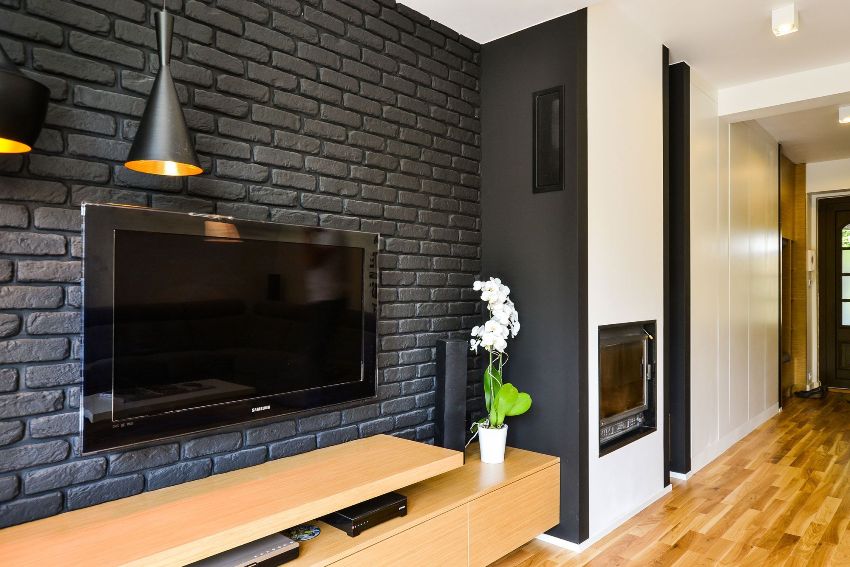
Accessibility and relative ease of use allow you to decorate walls with gypsum tiles without any problems
In order to fix the elements on the surface, you can use one of two technologies: dry, involving the use of fasteners (bolts and battens), or wet, in which a special adhesive for gypsum tiles is used.
How to prepare the surface for laying gypsum tiles
Laying decorative plaster tiles for interior decoration requires preliminary work aimed at preparing the surface with which to work. The procedure should be carried out in stages with the obligatory observance of the order of the stages and all recommendations that are provided:
- the first thing to do is to level the surface. To eliminate defects, you can use a putty, which allows you to effectively eliminate even the smallest cracks;
- then the surface is cleaned of dust and dirt with water and left to dry completely;
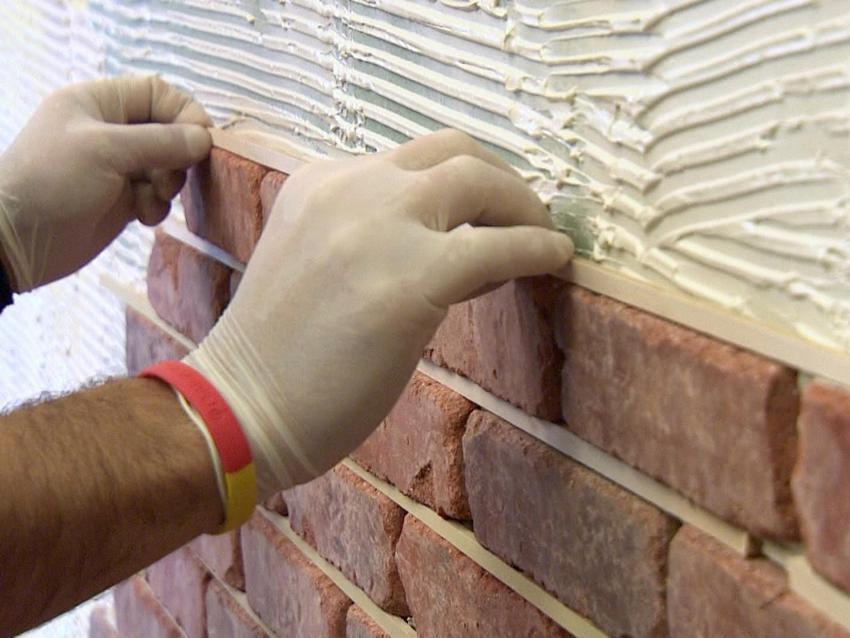
The process of laying gypsum tiles is carried out in stages, with the obligatory observance of all recommendations
- after that, you can proceed to work with tiles, first of all, paying attention to the issue of sorting it and removing defective products, the shape of which does not meet the requirements.
Important! In the course of work, it is recommended to abandon the use of elements that have any defect: chips, cracks, etc. Otherwise, this may negatively affect not only the appearance of the installation, but also its strength.
If only solid gypsum tiles are not enough to decorate the surface, you can cut the missing elements yourself. To do this, you can use a hacksaw for metal.
Among other tools that may be needed in the process of laying decorative tiles is a drill, which is necessary in order to make the holes necessary for laying communications.And also sandpaper, in the event that you decide to resort to the wet method of laying. It is used to increase the adhesion level of the back of the tile.
Secrets of laying brick-like tiles on various substrates
Decorative brick tiles for interior decoration can be easily installed on any substrate, including concrete, metal, brick, wood, etc. The main rules that need to be followed are the non-susceptibility of the base to deformations and shrinkage, as well as preliminary work to level the base.
When working with a concrete surface, special attention should be paid to the issue of porosity. As a solution to the problem, use a special primer, which will slightly reduce the absorption rates. At the same time, such processing is not required for newly laid brick walls. As for the glue that can be used for this purpose, then the one that is designed for laying tiles is quite suitable.
If you have to work with rather old brickwork, then it is necessary to clean it from efflorescence in advance by applying a primer to the surface. After that, the wall is plastered.
It is not uncommon to work with less fundamental foundations, such as plasterboard or plywood partitions. In this case, before you buy a gypsum tile for a brick, you need to make sure that the structure is strong and that it will withstand the load exerted on it. Also pay attention to the moisture level of the surface.
The base of the wall should be as dry as possible, and all elements should be firmly and securely fixed. In this case, a primer can be applied to the surface. When working with a wooden base, glued on top of it glass canvas, which is subsequently plastered.
Important! Before you start laying gypsum tiles on the surface of a wall made of plywood or drywall, you need to make sure that it is not prone to deformation.
Features of dry installation of gypsum tiles
In order for the coating laid from gypsum tiles by the dry method to be reliable and attractive, it is necessary to take care in advance of observing the rules of technology. First of all, you need to take care of the presence of special protrusions and grooves on the sides of each element. The installation procedure is represented by the following sequence of actions:
- A distance is measured from one of the corners of the room, equal to the width of the selected tile. At this point, a wooden lath of the appropriate size is fixed.
- Tiles are laid in the opening, which was formed as a result of fixing the vertical strip. This procedure should be carried out from top to bottom.
- In order to securely fix the elements, I use screws and bolts.
- After that, a distance equal to the width of the tile is again measured from the first strip, after which the procedure is repeated until the entire surface is properly formed.
Features of the installation of gypsum tiles with a wet method
In order to smoothly and beautifully lay gypsum tiles with the wet method, you need to use a slightly different approach. First of all, you need to mark the rows. If you plan to lay various elements (for example, there will be a drawing on the wall), it is worthwhile to lay out the layout on the floor in advance.
The preparation of the glue solution also requires special attention, since in one approach it is worth mixing as much as you can work out in a short period of time. Otherwise, it may deteriorate.
Related article:
Wall painting in the interior: an unusual solution in a modern apartment
Existing types, materials for hand-painted walls. The main stages of drawing a picture. What should a novice master pay attention to.
Unlike the previous method, wet styling should start from the bottom of the corner, gradually moving to the side and up. In this case, the layer of adhesive solution applied to the back of each element should not be thicker than 2 mm.
Important! There are two options for wet installation: end-to-end and with jointing. In the first case, the elements are stacked close to each other, and in the second it will be necessary to leave a certain gap, and preferably the same between all the elements.
Some nuances and recommendations of specialists for laying gypsum tiles
In the process of work, it is useful to know some of the subtleties that will allow you to get the highest quality and aesthetically pleasing result. So, experts provide the following recommendations:
- gypsum, despite the strength of the structure, is characterized by increased fragility. Therefore, in the process of working with it, care must be taken to avoid overspending of material;
- if brick tiles are laid in the kitchen, then the width of the joints can be quite large - 8-10 mm. This will significantly reduce material consumption;
- the use of scraps of tiles is permissible, however, this should be done, if possible, in the lower part of the wall or in those areas that will later be covered by furniture;
- in the process of gluing the tile, it must be pressed into the surface with rotational movements so that all excess glue protrudes on the sides. In the future, they can be used for sealing joints.
Important! The setting speed of the adhesive used for gypsum tiles is 30 minutes. It is extremely important to have time to smooth all the seams and eliminate excess mortar during this time.
The final finishing of gypsum tiles involves polishing the worn out joints. It should be borne in mind that additional correction to the joints will be necessary, since during the drying process they tend to change color. To give the coating the desired appearance, the inter-tile space is covered with a layer of water-based paint, and then varnish.
Is it worth buying gypsum brick tiles: material cost
If you want to buy gypsum bricks for finishing and surface cladding, you should familiarize yourself in advance with the prices offered by various popular manufacturers.
For example, the price of brick tiles for outdoor decoration will be an order of magnitude higher, given the fact that the composition contains many elements designed to improve the characteristics of the material and make it more stable.
Prices for plaster stone tiles for interior decoration start at 260 rubles per 0.5 m2 and may increase depending on the complexity of the texture and the manufacturer. Although its price rarely exceeds 750 rubles. At this cost, you can find gypsum tiles of almost any complexity and color.
How to make a tile with your own hands from plaster: manufacturing technology
As you might guess from the name, one of the main components of such tiles is gypsum. It is recommended to use a material marked as gf 10, since its characteristics fully meet all the requirements. Gypsum of this brand is strong enough, has a long service life and tolerates stress well.
If, for some reason, it was not possible to purchase this particular material, you can additionally seal any other by adding special reinforcements to it, designed to improve the properties of the material.But even in this case, it is worth considering that such a facing tile for a brick is not used for external decoration.
So, let's try to figure out how to make gypsum at home, suitable for facing surfaces and at the same time sufficiently resistant to external influences. For this purpose, the following materials can be used:
- gypsum;
- plasticine;
- paraffin (regular candles can be used);
- cardboard box;
- silicone sealant.
Of course, the easiest way is to use a ready-made silicone mold for tiles, which will significantly simplify the manufacturing procedure and reduce the time spent. But in general, you can make a mold for gypsum tiles yourself, using sculptural plasticine.
In order to make the shape, the sculptural plasticine is rolled out in an even layer, the thickness of which should be about 20 mm. Then, using the most ordinary brick, impressions are made inside, which will serve as forms for the ebb.
You can also use paraffin to create a mold for a decorative stone with your own hands. It needs to be melted and poured into an appropriately sized box that the brick can fit into. Once the paraffin is completely cured, it can be removed and used as a mold. The same method works well with silicone sealant.
How long it will take to make gypsum tiles for a stone directly depends on how many forms will be prepared. It is better if there are enough of them. Then it will take fewer approaches to cast the required number of elements.
The process of making gypsum bricks for interior decoration itself is as follows:
- gypsum must be poured into a container and added water to obtain a creamy solution;
- the forms into which the gypsum solution will be poured for hardening must be pre-lubricated with fat or oil, so that later the elements can be easily removed;
- After pouring the composition into the mold, gently shake it so that the solution is evenly distributed.
Important! If you notice the presence of water that separates from the gypsum after the solution has been mixed, then it must be poured out and a new one prepared again, following all the instructions prescribed by the manufacturer.
Gypsum tiles are an excellent facing material that can significantly transform the interior of a room. With its help, you can decorate niches, ledges, staircases in an original way, as well as zone the space. The main thing is to choose the right place for its location in order to avoid contact with moisture and increased mechanical stress. In this case, decorative brick-like tiles will decorate your interior for many years.
